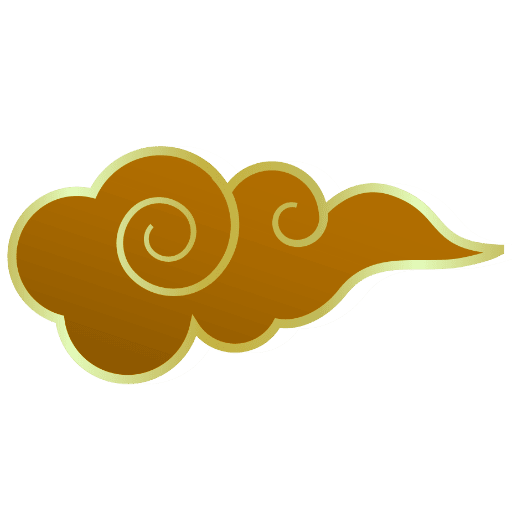Zhan Zhuang
Introduction: The Art of Standing Still
Imagine gaining strength, health, and spiritual clarity by simply standing still. This might sound impossible to our modern minds, trained to believe that movement equals progress. Yet for centuries, Daoist practitioners in the Wudang Mountains have known a profound secret: stillness contains the seed of all movement, and standing meditation—Zhan Zhuang—opens the door to this ancient wisdom.
Historical Roots and Development
Ancient Origins
The roots of standing practices stretch deep into Chinese history. One of the earliest written references to exercises resembling Zhan Zhuang appears in the Huangdi Neijing (Yellow Emperor's Classic of Internal Medicine), a foundational text of Traditional Chinese Medicine dating from approximately 2,600 years ago. This suggests that standing practices for health were already established in ancient times.
The Wudang Connection
The Wudang Mountains in Hubei Province have been a center for Daoist cultivation for over two millennia. These mountains became particularly important during the Ming Dynasty (1368-1644), when imperial patronage led to extensive temple construction and the flourishing of Daoist practices.

Separating Legend from History: The Zhang Sanfeng Question
The figure of Zhang Sanfeng illustrates the complex relationship between history and legend in Chinese martial arts. Multiple historical records from the Ming Dynasty mention various people named Zhang Sanfeng—at least two or three different individuals spanning several centuries. The most well-documented lived between the Yuan and Ming dynasties (approximately 1314-1417) and was known as a Daoist alchemist and practitioner of internal cultivation.
Core Daoist Principles in Practice
Wu Wei: Effortless Action
The Daoist concept of wu wei, often translated as "non-doing" or "effortless action," lies at the heart of Zhan Zhuang. This doesn't mean doing nothing. Instead, it means finding the most natural, efficient way to maintain the posture. When you stand in Zhan Zhuang, you learn to release unnecessary tension while maintaining structural alignment. Your body discovers how to support itself with minimal effort, teaching you to distinguish between essential action and wasteful tension.
Yin-Yang Balance
Zhan Zhuang embodies the dynamic balance of yin and yang. While the exterior appears still (yin), the interior remains active (yang). Blood circulates, energy moves, and awareness expands. The upper body becomes light and empty (yang), while the lower body grows heavy and rooted (yin). This creates what Wudang masters call "heavy below, light above"—a fundamental principle for both health and martial application.
The Three Treasures: Jing, Qi, Shen
Daoist philosophy identifies three treasures within the human body: jing (essence), qi (energy), and shen (spirit). Zhan Zhuang works with all three levels simultaneously. Jing relates to our physical structure and constitutional strength. Standing practice strengthens bones, tendons, and ligaments while preserving the kidneys' vital essence. The Wudang tradition teaches that maintaining specific postures helps seal and cultivate jing, preventing its wasteful dissipation through excessive activity or emotional turbulence. Qi circulation improves dramatically through standing meditation. As physical blockages release and the body finds optimal alignment, energy flows more freely through the meridian system. Practitioners often experience warmth, tingling, or magnetic sensations—signs that qi has begun moving. Shen, our spiritual essence, becomes calm and clear through the practice. The mind settles like sediment in still water, allowing our original nature to shine through. This clarity isn't forced through concentration but emerges naturally from the stillness.
The Wudang Method: Distinctive Characteristics
Natural Posture and Alignment
Wudang Zhan Zhuang emphasizes naturalness above all. Unlike some schools that use extreme positions, Wudang practitioners stand as if waiting for a friend—comfortable, alert, but not tense. The basic position involves: Standing with feet shoulder-width apart, parallel or slightly turned outward. Knees remain slightly bent, never locked. The pelvis tilts slightly, as if sitting on the edge of a high stool. The spine elongates naturally, without force. Shoulders relax downward while the crown of the head lifts gently, as if suspended by a silk thread. Arms may hang naturally at the sides for beginners or rise to various heights as students advance. The classic "embracing the tree" position places the arms in a circle at chest height, as if hugging a large balloon. Fingers remain separated and gently curved, never tense.
Breath and Energy Cultivation
Breathing in Wudang Zhan Zhuang follows natural patterns—no forced techniques or complex counting. The tradition teaches "breath follows mind, mind follows breath." As the body relaxes and aligns, breathing naturally becomes deeper and slower, eventually engaging the entire torso in a gentle wave-like motion.
Integration with Internal Martial Arts
In Wudang tradition, Zhan Zhuang serves as the mother of all internal martial arts. Every movement in Taijiquan, Xingyiquan, or Baguazhang emerges from the stillness cultivated in standing practice. The internal connections, the sense of whole-body power, and the ability to remain centered under pressure—all develop through patient standing. Masters often test students' Zhan Zhuang by gently pushing them. A proper stance absorbs and redirects force naturally, without muscular tension. This quality, called peng jin or ward-off energy, becomes the foundation for all martial techniques. Students learn that true power comes not from muscular contraction but from proper structure and energy cultivation.
Stages of Development
Beginning Practice: Building the Foundation (0-100 days)
New practitioners focus on basic posture and relaxation. The initial goal isn't to stand for long periods but to establish correct alignment. Even five minutes of proper practice surpasses an hour of incorrect standing. Common experiences include: Trembling or shaking in the legs—this indicates weakness leaving and strength building. Muscle fatigue and burning sensations—the body adapts to the new demands. Mental restlessness—the mind rebels against stillness. Heat or cold sensations as energy begins moving. The Wudang tradition emphasizes patience during this phase. The body needs time to restructure itself according to natural principles.
Intermediate Development: Energy Cultivation (100 days-3 years)
After establishing a solid foundation, practitioners begin experiencing qi circulation. The trembling subsides, replaced by feelings of warmth, fullness, or gentle movement within stillness. Standing times naturally extend to 20-40 minutes without strain. During this phase, students learn different arm positions and their energetic functions. The body becomes increasingly connected—a movement in one part affects the whole. Breathing coordinates naturally with subtle internal movements. Many practitioners report significant health improvements during this stage.
Advanced Practice: Spiritual Refinement (3+ years)
Advanced practice transcends physical and energetic development, entering spiritual cultivation. The boundary between self and environment begins dissolving. Practitioners report experiences of expanding beyond the physical body, merging with surrounding space, or feeling connected to the natural world. At this level, Zhan Zhuang becomes a form of standing meditation comparable to the deepest sitting practices. The Wudang tradition calls this "returning to the source"—discovering our original nature before conditioning and education shaped us. Time may seem to stop or stretch during practice. An hour can feel like minutes, or a moment can contain eternity.
Modern Scientific Understanding
Recent research has begun validating what Daoist practitioners have long known. Studies show that Zhan Zhuang practice: Increases bone density through the sustained engagement of the skeletal system. The weight-bearing nature of standing practice stimulates bone-building cells, helping prevent osteoporosis. Improves cardiovascular function without elevating heart rate to aerobic levels. The practice enhances circulation through subtle muscular engagement and improved venous return. Strengthens the fascia network throughout the body. Modern understanding of fascia as a communication system aligns with traditional concepts of qi circulation. Balances the autonomic nervous system, reducing chronic stress markers. Regular practitioners show improved heart rate variability, indicating better stress resilience. Enhances proprioception and balance, reducing fall risk in elderly practitioners. The constant micro-adjustments required in standing meditation fine-tune the body's position-sensing abilities.
Sealing Method After Zhan Zhuang
After completing your Zhan Zhuang practice, it's important to seal and store the energy you've cultivated. First, slowly lower your arms and place your hands on your lower dantian (approximately three fingers below the navel). Men place the right hand directly on the dantian first with the left hand on top. Women do the opposite, placing the left hand on the dantian first with the right hand on top.
No Hard Feelings
But I want you to know:
What that €18.99 actually does, because it's not just about watching videos.
Here's what your support actually funds:
- Over 1,200 video tutorials that I'm constantly adding to
- Live online classes where you can actually ask questions and get real-time corrections
- Weekly blog posts breaking down complex Daoist principles into understandable concepts
- Archiving work – documenting authentic methods before they get lost or commercialized beyond recognition
- Translation projects – making ancient principles accessible in modern language
- The technical infrastructure to deliver all this globally
Every month, that membership keeps the lights on for something that barely exists anywhere else
